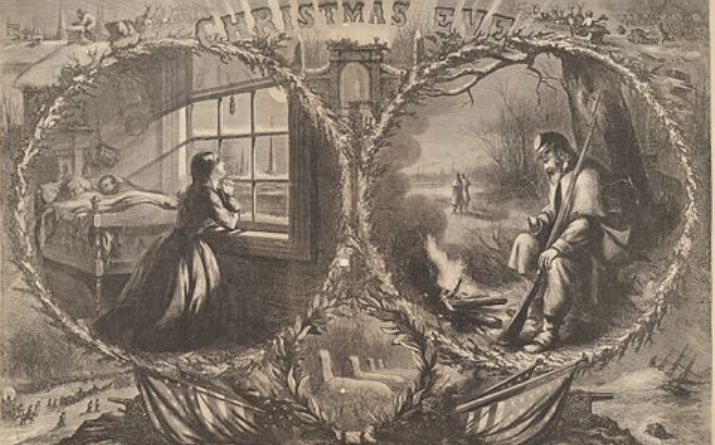
Saint Nick
We like to refer to Santa Claus as ‘Saint NIck’. There is quite a story of the relationship between Saint Nick, Father Christmas, and our contemporary Santa Claus. Read on for some entertaining facts and background on the evolution of our favorite fictional Christmas character.
One of the reasons we offer gifts today is due to the centuries-old Santa Claus custom. despite the fact that it wasn’t previously mentioned. This is due to the fact that the legend of Santa Claus is a tale that merits its own section.
Saint Nick and St Nicholas
Santa Claus did not always exist in the form that we know and love today. St. Nicholas, a figure from the fourth century A.D., is credited with starting it all. Here are the known and assumed facts of this most generous person who lived 1800 years ago!
St Nicholas Story
No historical record attests to Nicholas’s existence, hence little about his life is known for sure other than the likelihood that he served as bishop of Myra in the fourth century. Tradition holds that he was born in the ancient Lycian coastal city of Patara and migrated to Palestine and Egypt as a young man. Shortly after arriving in Lycia, he was appointed bishop of Myra. He was imprisoned and most likely tortured by the Roman emperor Diocletian during the persecution of Christians, but under Constantine the Great’s administration, he was freed.
He was buried in his church at Myra, and by the sixth century, people were well aware of his tomb there. The supposed saint’s remains were taken from Myra in 1087 by Italian sailors or merchants and brought to Bari, Italy. This move substantially elevated the saint’s fame in Europe, and Bari became one of the busiest of all pilgrimage sites. Although pieces have been purchased by churches all around the world, Nicholas’ relics are still housed at the San Nicola basilica in Bari, which dates back to the 11th century. One such relic fragment, a bit of hip bone from a church in the United States, was dated in 2017 and proved to be from the fourth century.
Who Put the ‘Saint’ into Saint Nicholas?
On June 5, 1446, Pope Eugene IV, an Augustinian himself, canonized Nicholas. He became a saint first among Augustinians. Nicholas was credited with 300 miracles, three resurrections included, at the time of his canonization.
Connection with Our Santa Claus
His charming deeds of kindness are what connect the stories of St. Nicholas and modern-day Santa Claus.
It is stated that St. Nicholas saved the lives of three sisters in one specific act of charity and love. According to the legend, the father of three sisters planned to sell them into slavery or prostitution since he was a devout man who was impoverished and lacked the resources to provide his daughters dowries that would have shielded them from this awful fate. After learning about this man, St. Nicholas decided to visit his house one night.
St Nicholas and Christmas Stockings
St. Nicholas observed the three sisters dozing off in their bed while peering through the window. He observed that they had just finished hanging their stockings to dry by the fireplace and the window.
Then, according to the legend, St. Nicholas pulled numerous gold coins from his pockets and started flinging them through the window and down the chimney.
The sisters were miraculously spared from a future of poverty when the gold pieces somehow fell into their stockings. When they woke up the next morning, they saw their stockings full with sparkling gold pieces.
St Nicholas Charitable Deeds and Miracles
That was but one of St. Nicholas’ charitable deeds. It is also the one that is told and known the most. He also pulled off a number of other commonplace “miracles,” saving the helpless from their impending doom.
His tale spread like wildfire throughout Europe, and enthused kids would hang their stockings by the fireplace. Additionally, in some cultures, people leave their wooden shoes on the hearth. When they would wake up in the mornings, their shoes or empty stockings would be filled with gifts and sweets of every kind.
Saint Nick becomes a Saint
What is significant about Nicholas is that he was not a saint when he carried out these deeds of compassion. He was a regular guy with a remarkable heart. Nicholas was a devout Christian who based his life on it and had compassion for other people. He became a saint as a result of his excellent works and charitable deeds toward the less fortunate. Nicholas was officially recognized as a saint in the 800s and in the 1200s Catholics in France began celebrating Bishop Nicholas Day on December 6.
However, the St. Nicholas of those times did not resemble the Santa Claus of modern American culture.
Long after, a new Santa emerged, although he was modeled after the storied St. Nicholas. What a lovely person to model a beloved child-friendly character after!
When is Saint Nicholas Day ?
According to the ancient church calendar, the feast of Saint Nicholas of Myra, also known as the Feast of Saint Nicholas, is observed on December 5 or 6 in Western Christian countries and on December 19 in Eastern Christian countries. It coincides with Advent. With special consideration for Saint Nicholas’ reputation as a gift-bringer and by attending church services, it is observed as a Christian holiday.
Father Christmas
Around the 17th century, in Britain, a lovably merry guy known as Father Christmas brought presents to youngsters all around the nation on Christmas Eve. He wasn’t precisely the Santa Claus we had in mind, but he was pretty darn close.
Father Christmas was a rather lanky man with a white beard, an elderly man with a smile on his face, and he wore a green robe with white fur trim and a staff. He basically had the appearance of an older Christian man. Gandalf from The Lord of the Rings, perhaps? Yeah. You see what I mean.
If you watch the timeless Charles Dickens novel “A Christmas Carol,” and you see the “Ghost of Christmas Past,” then you will see a character who resembles Father Christmas. Of course, with the white hair and beard.
Santa Claus
But where did Santa’s name come from?
You can thank the Dutch for that. The Dutch also had their own Santa that they had invented. However, he went by the moniker “Sinterklaas” to them. Santa Claus-like, don’t you think?
But the story doesn’t end there. Do you ever wonder where Santa got all of his small helpers? Yes, I am referring to the elves. Well, the Dutch also contributed to those!
Santa’s Elves
According to legend, St. Nicholas freed a young Ethiopian boy named “Piter” from a Myra marketplace where he was ordered to work there for the rest of his life. Piter made the decision to dedicate his life to St. Nicholas, his savior, and assist him in his work as a result.
Later, the one “assistant” multiplied into many. In order to prepare for the biggest night of the year, Christmas Eve, Santa has the help of his elves.
A fascinating side note is that “Piter” was given this name to symbolize another saint with the name Peter. You may be familiar with him ;-).
So now that we are aware of Santa’s origins and name-giving process, how did he change from looking like Father Christmas to merry old Saint Nick?
That one is simple.
Santas Contemporary Look
The Sentinel, a local Troy, New York newspaper, published the heartfelt Christmas poem “A Visit From St. Nicholas” on December 23, 1823. However, it is now popularly known as “The Night Before Christmas.”
As we all recall from our own childhoods, Santa Claus is portrayed as an elderly man with a portly build, a red nose, a white beard, and an attire decorated with fur. The poem also tells us that Santa has a sleigh, eight small reindeer, and other equipment to do his nightly rounds. Why is it not 9?
Nope. It wasn’t until later that Rudolph came to be.
Later in 1863, when an American cartoonist by the name of Thomas Nast appeared in “Harper’s Weekly,” Santa started sporting the red suit. Santa has largely maintained the same appearance since then. Later, in or around 1885, Santa made his first appearance on a holiday greeting card dressed in his customary red attire and much resembling as he does now.
Note: If you’d like more details about Saint Nicholas, click here for the Wikipedia treatment of this most excellent fellow!



